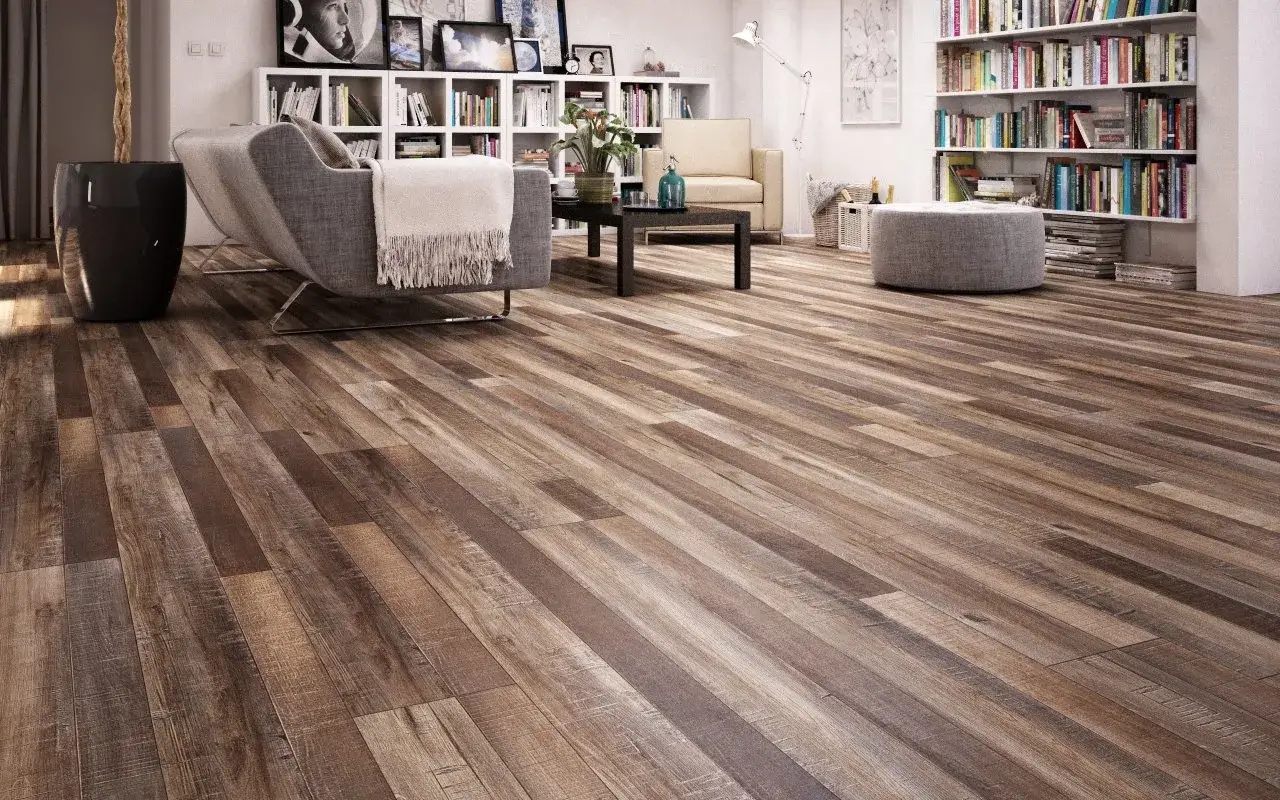Hardwood floors are not suitable for areas that are prone to moisture, humidity, or temperature fluctuations, such as bathrooms, basements, kitchens, or outdoor spaces. These conditions can cause the wood to warp, crack, rot, or mold, ruining the appearance and durability of the floor. In this article, we will explain why hardwood floors are not a good choice for these areas, and what are some alternative flooring options that you can consider.
Why Hardwood Floors Are Bad for Moisture-Prone Areas
Hardwood floors are made of natural wood, which means they have pores that absorb and release moisture. This is a normal and desirable feature of wood, as it allows it to adapt to the environment and maintain its stability. However, when the moisture level is too high or too low, or changes frequently, the wood can expand or contract excessively, causing damage to the floor.
For example, in bathrooms, the steam from showers and baths can create a humid environment that can make the wood swell and buckle. In basements, the moisture from the ground or leaks can seep into the wood and cause it to rot or mold. In kitchens, spills and splashes can stain and damage the wood. In outdoor spaces, the exposure to sun, rain, snow, and frost can make the wood fade, crack, or decay.
These problems can not only affect the appearance of the floor, but also its structural integrity and safety. Damaged wood can create gaps, uneven surfaces, or loose boards that can pose a tripping hazard or allow pests and insects to infest the floor. Moreover, repairing or replacing hardwood floors can be costly and time-consuming, especially if the damage is extensive or affects the subfloor or the joists.
What Are Some Alternative Flooring Options for Moisture-Prone Areas
Fortunately, there are many other flooring options that can withstand moisture, humidity, or temperature fluctuations better than hardwood floors. Some of these options are:
- Tile: Tile is one of the most durable and water-resistant flooring materials available. It comes in a variety of colors, shapes, sizes, and textures, and can mimic the look of wood, stone, or other natural materials. Tile is easy to clean and maintain, and can resist stains, scratches, and mold. Tile is ideal for bathrooms, kitchens, basements, and outdoor spaces, as it can handle wet and dry conditions well. However, tile can be cold and hard underfoot, and may require a subfloor or an underlayment to prevent cracking or shifting.
- Vinyl: Vinyl is another popular flooring option that can resist moisture and humidity. Vinyl is made of synthetic materials that are flexible and resilient, and can also imitate the appearance of wood, stone, or other natural materials. Vinyl is affordable, easy to install, and easy to clean and maintain. Vinyl is suitable for bathrooms, kitchens, and basements, as it can prevent water damage and mold growth. However, vinyl can fade or discolor over time, and may emit volatile organic compounds (VOCs) that can affect indoor air quality.
- Laminate: Laminate is a flooring option that consists of a thin layer of wood or wood composite bonded to a high-density fiberboard (HDF) core and a protective coating. Laminate can replicate the look and feel of hardwood floors, but at a lower cost and with less maintenance. Laminate is resistant to scratches, stains, and fading, and can handle moderate moisture and humidity. Laminate is suitable for living rooms, dining rooms, bedrooms, and hallways, but not for bathrooms, basements, or outdoor spaces, as it can swell or warp when exposed to excessive moisture or temperature changes.
- Engineered Wood: Engineered wood is a flooring option that consists of several layers of wood or wood composite glued together to form a plank. The top layer is usually made of hardwood, while the lower layers are made of plywood, HDF, or other wood products. Engineered wood can offer the beauty and warmth of hardwood floors, but with more stability and durability. Engineered wood can handle some moisture and humidity, but not as much as tile or vinyl. Engineered wood is suitable for living rooms, dining rooms, bedrooms, and hallways, but not for bathrooms, basements, or outdoor spaces, as it can also expand or contract when exposed to extreme conditions.
Conclusion
Hardwood floors are a great flooring option for many areas of the home, as they can add value, style, and comfort to any space. However, hardwood floors are not suitable for areas that are prone to moisture, humidity, or temperature fluctuations, such as bathrooms, basements, kitchens, or outdoor spaces. These conditions can damage the wood and compromise the quality and safety of the floor. Therefore, it is advisable to choose alternative flooring options that can withstand these conditions better, such as tile, vinyl, laminate, or engineered wood. These options can offer similar or better benefits than hardwood floors, but with less risk and hassle.

